#Mithilaart
Explore tagged Tumblr posts
Text
Rhythms of Mithila: The Spirit of Madhubani Art
Madhubani art, also known as Mithila painting, is one of the most celebrated forms of traditional Indian folk art. Originating from the Mithila region, which spans parts of Bihar, India, and Nepal, this art form is renowned for its unique style, intricate detailing, and vibrant use of colors. The name "Madhubani" translates to "forest of honey," which reflects the rich cultural and natural environment that inspires these artworks.
Historical Background
The origins of Madhubani art are deeply rooted in Indian mythology and history. It is believed that this art form dates to the time of the Ramayana, an ancient Indian epic. According to legend, King Janak of Mithila commissioned artists to create paintings on his daughter Sita's wedding to Lord Rama. This royal patronage helped establish the tradition of creating auspicious images to mark special occasions, a practice that continues to this day.
Traditionally, Madhubani paintings were made on the walls of homes during festivals, rituals, and important life events such as weddings and births. These paintings served as an expression of devotion, a means of preserving cultural narratives, and a way of bringing good fortune. Over time, the medium expanded from walls to cloth, paper, and canvas, making the art more accessible and portable.
Techniques and Materials*
Tools and Materials:
Madhubani art is characterized by its use of simple tools and natural materials. Artists traditionally use fingers, twigs, brushes, matchsticks, and even nib pens to create intricate designs. The natural pigments and dyes used in these paintings are derived from a variety of sources. For instance, yellow is obtained from turmeric, blue from indigo, red from the Kusum flower or red sandalwood, green from leaves, and black from burnt rice. Cow dung and mud are often mixed to prepare the base of the wall paintings, providing a natural texture and background.
Techniques:
The technique involves outlining the designs with bold lines using a mixture of cow dung and mud or black from burnt rice husk. This is followed by filling the spaces with bright, vibrant colors. The paintings often feature a double line border filled with intricate patterns and motifs such as flowers, animals, and geometric shapes. The figures in the paintings are typically depicted in profile, and the faces are drawn with elongated eyes, which is a distinctive feature of this art form.
Madhubani art does not leave any empty space in the composition; every inch is filled with intricate patterns and symbols. This technique of filling the entire space is known as Kachani or Bharni.The detailing and the use of geometric patterns are not just aesthetic choices but also hold cultural and symbolic meanings, reflecting the artists' connection to their cultural heritage.
Styles of Madhubani Art
Madhubani art is not monolithic; it encompasses several distinct styles, each with its own characteristics and thematic focus. The primary styles include:
Kachani Style:
Kachani style of Madhubani painting is style which comes from the Kayastha community by its intricate line work and fine detailing. Kachani is primarily monochromatic, using a minimal palette with black and white being predominant. This style focuses more on the detailing of the figures and the use of fine lines to create patterns. It often represents scenes from nature and daily life.

2. Bharni Style:
The Bharni style is known for its bold, vibrant use of colors and the depiction of mythological figures, nature, and animals. Traditionally practiced by Brahmin women, this style often portrays Hindu deities like Krishna, Rama, Durga, and Saraswati. The emphasis is on filling the central subject with solid colors, while the background may be decorated with intricate patterns.

3. Tantrik Style:
The Tantrik style is heavily influenced by tantric symbolism and motifs. It involves the depiction of tantric deities and yantras (geometric diagrams used in worship). This style is spiritual and esoteric, often featuring complex and abstract patterns that are rich in symbolic meaning.

4. Godna Style:
The Godna style is inspired by traditional tattoo patterns. This style incorporates symbols and motifs that are culturally significant and often linked to social beliefs and practices. It is characterized using repetitive patterns and motifs such as flowers, animals, and geometric shapes.

5. Kohbar Style:
The Kohbar style is specifically associated with marriage rituals. These paintings are created on the walls of the nuptial chamber and depict themes related to love, fertility, and prosperity. The central motif often includes a lotus flower, symbolic of fertility, surrounded by fish, birds, and other auspicious symbols.

Themes and Motifs
Madhubani paintings are rich in symbolism and cultural narratives. The themes can vary widely, but they often revolve around mythology, nature, and everyday life. Common motifs include:
- Mythological Figures: Depictions of Hindu gods and goddesses, such as Lord Krishna with Radha, Lord Rama with Sita, and various forms of the goddess Durga, are prevalent. These figures are often portrayed in vibrant, dynamic compositions that narrate stories from Indian epics and scriptures.
- Nature and Animals: The natural world is a significant inspiration in Madhubani art. Trees, flowers, birds, and animals like elephants, peacocks, and fish are commonly featured. These elements are not just enhancing but are also infused with cultural and spiritual symbolism. For example, the fish symbolizes fertility and prosperity, while the peacock represents beauty and love.
- Social and Cultural Practices: Madhubani art also captures scenes from daily life, such as agricultural activities, festivals, and social gatherings. These depictions provide a glimpse into the cultural practices and traditions of the Mithila region.
- Abstract and Symbolic Patterns: Geometric patterns, tantric symbols, and abstract designs are also a part of Madhubani art. These elements often carry deeper meanings and are used to convey philosophical and spiritual concepts.
Cultural Significance
Madhubani art is not just an artistic expression; it is a vital part of the cultural and social fabric of the Mithila region. The art form is deeply intertwined with the community's rituals, festivals, and social practices. For instance, the Kohbar paintings are an integral part of wedding ceremonies, symbolizing blessings for a happy and prosperous married life. Similarly, paintings of deities are created during festivals to invoke divine blessings.
The art form also serves as a medium for preserving and transmitting cultural knowledge and values. Through the depictions of mythological stories and traditional practices, Madhubani art helps keep the cultural heritage of the Mithila region alive.
Modern Adaptations and Global Recognition
In recent years, Madhubani art has acquired global appreciation and gratitude. The art form has transcended its traditional boundaries and found new expressions in contemporary contexts. Artists are now creating Madhubani-inspired designs on textiles, pottery, home decor items, and even fashion accessories. The use of modern materials and techniques has also expanded the scope of this art form.
The Indian government and various non-governmental organizations have played a crucial role in promoting Madhubani art. Initiatives such as exhibitions, workshops, and cultural exchange programs have helped bring Madhubani artists into the limelight. Additionally, the art form has found a place in international art markets, with collectors and art enthusiasts from around the world appreciating its unique aesthetic and cultural depth.
Economic and Social Impact
The commercialization of Madhubani art has provided a significant source of income for the artists, many of whom are women from rural backgrounds. This economic empowerment has had a positive impact on the community, enabling better access to education, healthcare, and other resources. Moreover, the recognition of Madhubani art on global platforms has instilled a sense of pride and cultural identity among the artists and their communities.
Challenges and Preservation Efforts
Despite its popularity, Madhubani art faces challenges, including the risk of losing traditional techniques and motifs to modernization. The younger generation's inclination towards urban life and modern professions has led to a decline in the number of traditional artists. Additionally, the influx of synthetic materials and commercialization has sometimes compromised the authenticity and quality of the artwork.
To address these challenges, several organizations and art enthusiasts are working towards preserving the traditional aspects of Madhubani art. Efforts include documentation of traditional techniques, promotion of natural dyes, and providing training and support to upcoming artists. Educational programs and workshops are also conducted to create awareness and appreciation for this art form among the younger generation.
Conclusion
Madhubani art is a timeless expression of cultural heritage, artistic excellence, and social narratives. It is a testament to the rich cultural tapestry of the Mithila region and an invaluable part of India's artistic legacy. As this art form continues to evolve and adapt to modern times, it retains its essence and continues to inspire and captivate audiences worldwide. The ongoing efforts to preserve and promote Madhubani art ensure that this beautiful tradition will continue to thrive and enrich the cultural landscape for generations to come.
2 notes
·
View notes
Text
Vibrant Heritage: Explore Madhubani Paintings of Cultural Richness
Immerse yourself in the colorful world of Madhubani paintings, a traditional Indian art form that originated from the Mithila region of Bihar. Our collection showcases the intricate patterns, vivid colors, and cultural narratives that define this unique style. Discover the rich heritage and timeless beauty of Madhubani art through our curated selection of paintings.
#Madhubanipaintings#Mithilaart#Indianfolkart#traditionalpaintings#culturalheritage#colorfulartwork#ethnicpaintings#intricatepatterns#Indiantraditionalart#Biharpaintings
0 notes
Text
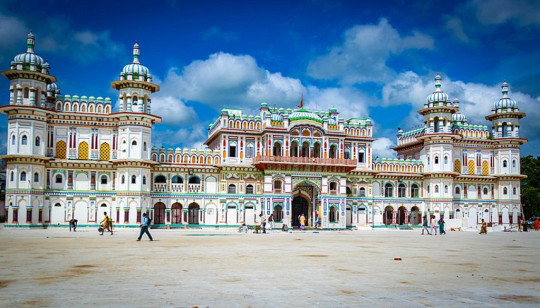
Janakpur Dham
Janakpur Dham, also known as Janaki Mandir, is a prominent religious site in Nepal's Janakpur city. It's revered as the birthplace of Goddess Sita, and the temple dedicated to her attracts devotees and tourists alike with its intricate architecture and spiritual significance in Hinduism. It's a center of religious and cultural activities in the region.
Certainly, here are some popular hashtags related to Janakpur, a city in Nepal known for its cultural and historical significance, that you can use on social media platforms to discover and share content about this city:
#Janakpur
#Nepal
#JanakiTemple
#MithilaArt
#RamSita
#HinduCulture
#ReligiousHeritage
#TravelNepal
#Janakpurdham
#CulturalTourism
#SitaMaiya
#Pilgrimage
#MadhesiCulture
#TemplesOfNepal
#JanakpurDiaries
#HistoricalCity
#LocalArt
#RamaNavami
#SitaMahal
#JanakpurRailway
0 notes
Text
Women are UNSTOPPABLE when they REALIZE they DESERVE BETTER ❤️
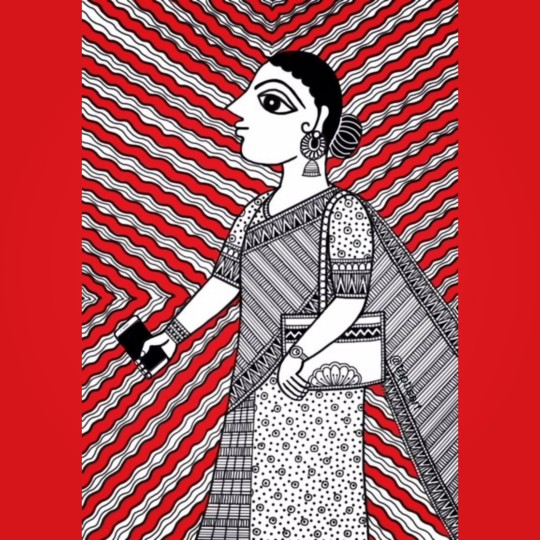
3 notes
·
View notes
Photo

Godess durga represents how to fight with devill and be strong. Buy Maa Durga Madhubani Painting at the affordable price. Best and Top Quality. Wide Range of Products Affordable PricePlace Your Order on Call & Whatsapp : +919058432240 Shop Now at : https://bit.ly/3kChbIE
#indianartist#mithilaculture#maithili#mandala#india#madhubaniartists#mithilanchal#madhubanimotifs#artoftheday#madhubaniartwork#madhubanipaintings#indianfolkart#mithila#artwork#artistsoninstagram#madhubaniartist#folkart#mithilaart#painting#artist#indianart#mithilapainting#art#madhubani#madhubanipainting#madhubaniart#a maadurga#durg#MAA
2 notes
·
View notes
Photo

Traditional Madhubani Painting . . . #madhubani #bihar #mithila #mithilaart #darbhanga #madhubaniart #mithilapainting #patna #art #madhubanipainting #folkart #mithilaculture #bihari #indianfolkart #madhubani_sharing #madhubani_painting @madhubani_decor #traditional #traditionalart #religious https://www.instagram.com/p/CSfmB4grYE0/?utm_medium=tumblr
#madhubani#bihar#mithila#mithilaart#darbhanga#madhubaniart#mithilapainting#patna#art#madhubanipainting#folkart#mithilaculture#bihari#indianfolkart#madhubani_sharing#madhubani_painting#traditional#traditionalart#religious
5 notes
·
View notes
Photo

Miniature Godna Painting. Size 12 cm x 12 cm. #mithilaart #abdheshkarn #nishanikambhagwate #interiorvista #loveart #mypainting #madhubanipainting #godna https://www.instagram.com/p/CQZArauFzRX/?utm_medium=tumblr
2 notes
·
View notes
Text
One day devi Chhinnamasta in
her human form was roaming
with two of her friends varnini
and shakini.Soon they felt
hungry and were starving...so
she requested to the devi-" ur
the mother of the universe ... We
want food., will you not be
giving us?...so devi cut her head
immediately and there were
three fountains of blood
bursting out of Devi's head and
drink her own blood with
varnini and shakini.. and thus
devi Stood over rati and Kamdev
which represent materialistic
desire in this world.the story
shows the power of Devi who
made this universe and she can
end this universe with neutral
mind..... there is nothing and
there is everything....Nothing is
static...

1 note
·
View note
Text
Embracing Tradition: The Significance of Madhubani Elements and Motifs in Modern Design
In the realm of art and design, few styles resonate with cultural richness and historical depth as profoundly as Madhubani. Originating from the Mithila region of Bihar, India, Madhubani art, also known as Mithila painting, is characterized by its vibrant colors, intricate patterns, and symbolic motifs. This traditional art form has evolved over centuries, yet remains a significant cultural expression, celebrated worldwide for its unique aesthetic and storytelling. As we delve into the various elements and motifs of Madhubani art, we uncover their importance and how they seamlessly integrate into modern design, enriching the visual and cultural narrative.
The Historical Roots of Madhubani Art
Madhubani art dates to the ancient times, believed to have originated during the era of the Ramayana when King Janak commissioned artists to create paintings for his daughter Sita's wedding. Traditionally, women of the region created these paintings on walls and floors of their homes during festivals and special occasions, using natural dyes and pigments. Over time, this art form transitioned to paper and canvas, gaining global recognition for its intricate designs and symbolic storytelling.
The Elements of Madhubani Art
1. Lines and Patterns
The foundation of Madhubani art lies in its use of lines and patterns. Artists employ fine lines, often in a repetitive manner, to create elaborate designs. These lines can be straight, wavy, or circular, forming the backbone of the artwork. The precision and consistency in these patterns reflect the meticulous nature of the artists and their dedication to preserving tradition.
2. Color Palette
The traditional color palette of Madhubani art is derived from natural sources. Colors like red, yellow, blue, green, and black are obtained from flowers, leaves, minerals, and soot. Each color holds symbolic meaning: red signifies love and fertility, yellow represents the divine and purity, blue denotes calmness and devotion, green symbolizes nature and fertility, and black is used for outlines and detailed work. The vibrant colors not only bring the artwork to life but also convey deeper cultural and spiritual messages.

3. Geometric Shapes
Geometric shapes play a crucial role in Madhubani art. Triangles, circles, squares, and diamonds are commonly used to create intricate patterns and borders. These shapes are often interwoven with organic forms, creating a harmonious blend of structure and fluidity. The use of geometry adds a layer of complexity and rhythm to the art, making it visually captivating.
Significant Motifs in Madhubani Art
1. Nature-Inspired Motifs
Nature is a central theme in Madhubani art, with motifs like trees, birds, animals, and flowers frequently depicted. The peacock, symbolizing beauty and love, is a popular motif, often rendered with elaborate detailing. Fish, representing fertility and prosperity, are also commonly featured. The tree of life, a recurring motif, symbolizes growth, vitality, and interconnectedness. These nature-inspired motifs not only celebrate the natural world but also reflect the deep connection between the people of Mithila and their environment.

2. Mythological and Religious Motifs
Mythological and religious themes are intrinsic to Madhubani art. Deities like Krishna, Rama, Shiva, and Durga are depicted with intricate detailing and vibrant colors. Scenes from epics like the Ramayana and Mahabharata are commonly illustrated, capturing moments of divine intervention and moral teachings. These motifs serve as a medium for preserving and propagating religious narratives and cultural heritage.

3. Human Figures
Human figures in Madhubani art are stylized and often depicted in profile. The elongated eyes and exaggerated features give them a distinctive look. These figures are usually adorned with traditional attire and jewelry, reflecting the cultural attire of the Mithila region. Scenes of everyday life, rituals, and celebrations are depicted through these figures, offering a glimpse into the socio-cultural fabric of the community.
4. Symbolic Motifs
Symbolic motifs like the sun, moon, and lotus hold special significance in Madhubani art. The sun represents energy and life force, while the moon symbolizes calmness and the passage of time. The lotus, a sacred flower in Indian culture, signifies purity and spiritual awakening. These motifs are not merely decorative but carry profound meanings, enriching the narrative quality of the artwork.
The Contemporary Relevance of Madhubani Art
As we embrace the global shift towards sustainable and culturally rich designs, Madhubani art finds renewed relevance in contemporary aesthetics. Designers and artists worldwide are incorporating Madhubani elements into fashion, home decor, and visual arts, creating a unique fusion of tradition and modernity.
1. Fashion and Textiles
The intricate patterns and vibrant colors of Madhubani art lend themselves beautifully to fashion and textiles. From sarees and scarves to modern dresses and accessories, Madhubani motifs add a touch of cultural elegance and timeless beauty. Designers are experimenting with traditional techniques and motifs, creating contemporary pieces that resonate with a global audience.

Bedsheet Painted in Madhubani Style
2. Home Decor
Madhubani art has found its place in modern home decor, with paintings, wall hangings, and furniture adorned with traditional motifs. The detailed patterns and vibrant colors bring a sense of warmth and cultural richness to living spaces. Incorporating Madhubani art into home decor not only enhances the aesthetic appeal but also celebrates the heritage and craftsmanship of Mithila.
3. Visual Arts and Illustrations
Contemporary artists and illustrators are drawing inspiration from Madhubani motifs, integrating them into various forms of visual arts. From digital illustrations to murals, the distinctive elements of Madhubani art are being reimagined in modern contexts. This fusion of traditional and contemporary art forms creates a dynamic visual language that appeals to diverse audiences.
Conclusion
Madhubani art, with its rich history and intricate elements, stands as a testament to the cultural and artistic heritage of Mithila. The use of vibrant colors, geometric shapes, and symbolic motifs creates a visual tapestry that is both aesthetically pleasing and deeply meaningful. As we continue to explore and embrace traditional art forms in contemporary design, Madhubani art offers a timeless source of inspiration, bridging the past and present. By integrating Madhubani elements and motifs into modern aesthetics, we not only preserve this invaluable heritage but also enrich our creative expressions with cultural depth and beauty.
#mithilaart#art#folkart#indianfolkart#madhubani#motifs#floral motif#contemporary art#geometric#culturalheritage
0 notes
Photo
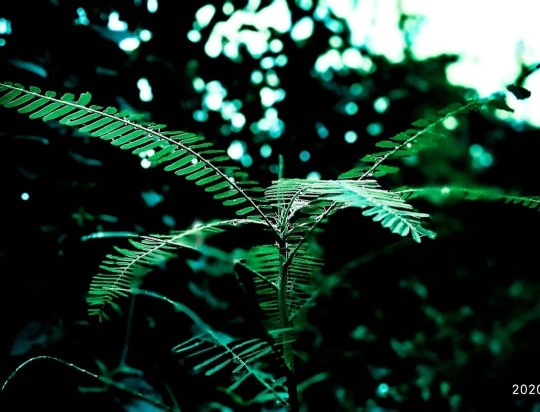
After rain,the water nourishes the leaf and provide a miraculous beauty☺️☺️☺️...they planned to defend themselves from predators but i catch the moment and save it.. .@_jha_sandeep . .shot by phone . .#indiaphotographyindia #indianphotographyhub #instaclicks #biharsehai #biharphotography #leafs #leafportrait #lightroom #lightroomedits #snapseedtutorial #snapseed #sharewithkaush #mithilaart #mithilaphotography #indianclicks #shotbymi #shotbyredmi #shotonmobile #mobigrapher #mobilecamerashots #mobilephotography ##mobile_photography #indian #bihar #madhubani #madhepur #jhanjharpur (at Bihar) https://www.instagram.com/p/CCBzG5Zp29l/?igshid=tvx5vznji0nc
#indiaphotographyindia#indianphotographyhub#instaclicks#biharsehai#biharphotography#leafs#leafportrait#lightroom#lightroomedits#snapseedtutorial#snapseed#sharewithkaush#mithilaart#mithilaphotography#indianclicks#shotbymi#shotbyredmi#shotonmobile#mobigrapher#mobilecamerashots#mobilephotography#mobile_photography#indian#bihar#madhubani#madhepur#jhanjharpur
1 note
·
View note
Video
youtube
hum anande rahbai yau - बम भोला के दरबार - Maithili Shiv Song | Kanwar Song | Bolbum Video 2020
#hum anande rahbai yau#बम भोला के दरबार#Maithili Shiv Song#maithili#aradhya kalash#maithili geet#विद्यापीठ गीत#vidyapith geet#vidyapith#sub4sub#maithili thakur#mithilanchal#mithilaart#hindi bhajan#maithili bhajan#new maithili bhajan#new maithili song#new maithili#bhole#bhole baba geet#bholenath#bholenath bhajan in maithili
1 note
·
View note
Text
Beauty is skin deep. Always❤️

#art#illustration#madhubaniart#illustrator#mithilaart#feminism#beauty#beauty is only skin deep#beautiful#alessia cara#artist on tumblr#illustrators on tumblr#tumblr girls#tumblog
5 notes
·
View notes
Photo
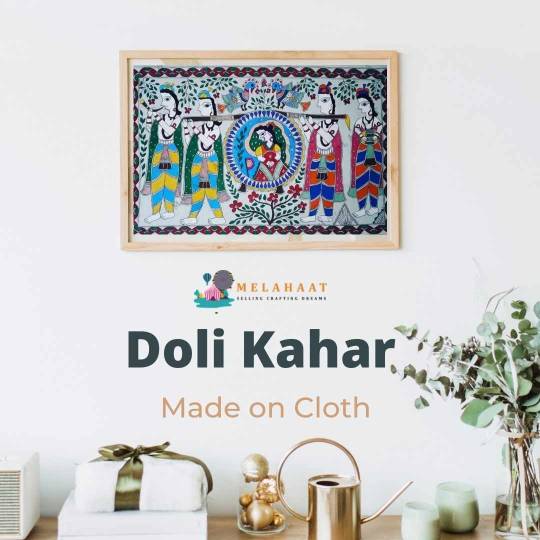
Buy Madhubani Painting Art Doli Kahar (made on cloth) from Melahaat.com. Place Your Order on Call & Whatsapp : +919058432240. Shop Now at : https://bit.ly/3lXpsq3
#bihar#indianartist#mithilaculture#maithili#mandala#india latest news#madhubaniartists#mithilanchal#madhubanimotifs#artoftheday#madhubaniartwork#madhubanipaintings#indianfolkart#mithila#artwork#artistsoninstagram#madhubaniartist#folkart#mithilaart#painting#artist#indianart#mithilapainting#art#madhubani#madhubanipainting#dolikahar
1 note
·
View note
Photo

This here is a Madhubani Sketch. Indian traditional madhubani paintings are a 2500-year-old folk art and the history of the same is said to date back to the time of Ramayana. Being originated from the Mithila region in Bihar, this form of painting is aka Mithila Art. #vrsketchers #madhubanipainting #madhubanisketch #mithilapainting #mithilaart #pencilsketch #pencilart #traditionalart #traditionaldrawing #indiantraditions #sketching #sketchy #indianart #indianartist #sketchdrawing #sketcher #artist #artistsoninstagram #illustrationartists #drawingsketch https://www.instagram.com/p/B-aBIXHpUoe/?igshid=pabrhxj3ugpm
#vrsketchers#madhubanipainting#madhubanisketch#mithilapainting#mithilaart#pencilsketch#pencilart#traditionalart#traditionaldrawing#indiantraditions#sketching#sketchy#indianart#indianartist#sketchdrawing#sketcher#artist#artistsoninstagram#illustrationartists#drawingsketch
1 note
·
View note
Photo
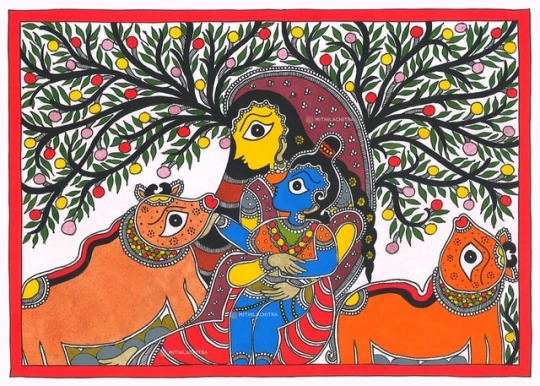
Jai Shri Krishana❤❤❤❤ #madhubani #madhubaniart #madhubanipainting #krishna #yashodakrishna #iscon #iscontemple #kanha #mithilaart #art #artoftheday #artistonistagram #indianart #indianfolkart #indiandesigns #indianartist #nature #colour #color #inkart #drawing #painting #inspiredbynature #homedecor #wallart #indianhomedecor #artsandcrafts #instaart #artist #people #artforsale #buyart #mithilachitra (at Delhi, India) https://www.instagram.com/p/B2YyCbzh7y8/?igshid=ymo7uab18y1w
#madhubani#madhubaniart#madhubanipainting#krishna#yashodakrishna#iscon#iscontemple#kanha#mithilaart#art#artoftheday#artistonistagram#indianart#indianfolkart#indiandesigns#indianartist#nature#colour#color#inkart#drawing#painting#inspiredbynature#homedecor#wallart#indianhomedecor#artsandcrafts#instaart#artist#people
1 note
·
View note
Photo

Some more amazing clicks of my ongoing exhibition at Jehangir art gallery… God was kind to fulfill another dream … displaying my art in Jehangir art gallery… although this is a group show… ek din solo bhi hoga aisi ishwar se kamna hai…. I believe that I have a right to “Karma” or actions but never to any Fruits thereof. #paintingexhibition #jehangirartgallery #eventsinmumbai #septemberevents #madhubanipainting #mithilaart #mithilaculture #indianfolkart #neenaart #neenaartstudio (at Jehangir Art Gallery) https://www.instagram.com/p/CiP5S5QjEwQ/?igshid=NGJjMDIxMWI=
#paintingexhibition#jehangirartgallery#eventsinmumbai#septemberevents#madhubanipainting#mithilaart#mithilaculture#indianfolkart#neenaart#neenaartstudio
0 notes